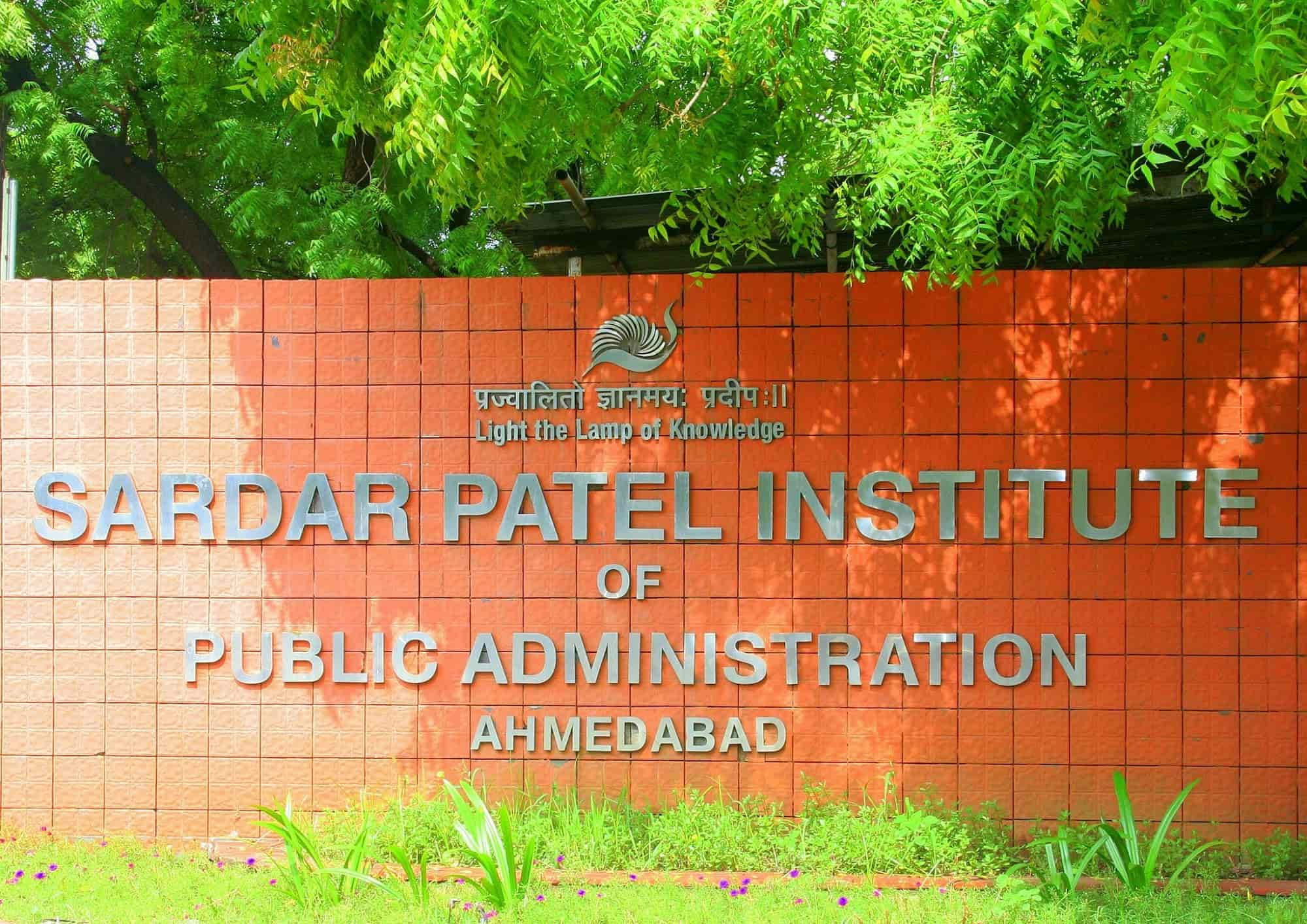9 Top Universities For Mass Communication Top universities for Mass Communication in India, which includes the Indian Institute of Mass Communication (IIMC), Jamia Millia Islamia, and Delhi University, are famend for his or her complete packages and sturdy enterprise connections. These establishments provide specialised publications in journalism, media studies, and communique. They are acknowledged for his or her brilliant faculty, current facilities, and a success alumni, making them high alternatives for college kids meaning to excel withinside the media and communique fields.
1. Indian Institute of Mass Communication (IIMC), New Delhi
2. Jamia Millia Islamia (JMI), New Delhi 9 Top Universities For Mass Communication
3. Delhi University (DU), New Delhi 9 Top Universities For Mass Communication
4. Symbiosis Institute of Media and Communication (SIMC), Pune
5. Madhya Pradesh Bhoj (Open) University 9 Top Universities For Mass Communication
6. Asian College of Journalism (ACJ) 9 Top Universities For Mass Communication
7. The Times of India School of Journalism 9 Top Universities For Mass Communication
8. Bharatiya Vidya Bhavan’s Sardar Patel Institute of Public Administration (SPIPA), Ahmedabad
Indian Institute of Mass Communication (IIMC), New Delhi
- Overview: IIMC is a premier institute dedicated to journalism and mass communication education, offering postgraduate and doctoral programs.
- NIRF Ranking: Not specifically ranked in NIRF but widely recognized.
- Fee: Approximately ₹1.5 lakh per year for postgraduate programs
- Organization Type: Government
- Official Website: IIMC
Established Institution:
IIMC turned into based in 1965 with the aid of using the Government of India to offer expert schooling withinside the subject of mass communique and journalism. It is one of the finest establishments in India for media studies.
Academic Programs:
IIMC gives postgraduate degree packages in numerous fields of mass communique, such as Journalism (English, Hindi), Radio & Television Journalism, Advertising & Public Relations, and Digital Media. The institute additionally gives a PhD application in Mass Communication.
NIRF Ranking:
IIMC isn’t specially ranked withinside the NIRF however is noticeably seemed withinside the subject of mass communique and journalism schooling. Fee Structure: For postgraduate packages, the charge is approximately ₹1.five lakh in step with 12 months. The charge can also additionally range relying at the application and the 12 months of admission.
Organization Type:
IIMC is a government-funded group below the Ministry of Information and Broadcasting, Government of India. It operates with a focal point on handing over best schooling and expert schooling in mass communique.
Modern Facilities:
The institute has cutting-edge infrastructure such as contemporary classrooms, well-geared up studios for radio and television, superior laptop labs, and a complete library with a massive series of media-associated resources.
Industry Connections:
IIMC has robust connections with the media enterprise, facilitating internships, fieldwork, and site possibilities for its students. The institute frequently hosts visitor lectures and workshops with enterprise professionals.
Jamia Millia Islamia (JMI), New Delhi 9 Top Universities For Mass Communication
- Overview: JMI offers a robust Mass Communication program through its A.J.K. Mass Communication Research Centre, known for its comprehensive curriculum.
- NIRF Ranking: 11th among universities (2024).
- Fee: Around ₹20,000 to ₹50,000 per year for postgraduate programs.
- Organization Type: Government
- Official Website: JMI

Established Institution:
Jamia Millia Islamia changed into based in 1920 and is diagnosed for its dedication to imparting great schooling throughout a extensive variety of disciplines.
Academic Programs:
JMI gives a complete suite of Mass Communication applications thru its A.J.K. Mass Communication Research Centre.
Programs include:
Postgraduate: MA in Mass Communication, MA in Convergent Journalism. Undergraduate: BJMC (Bachelor of Journalism and Mass Communication). Doctoral: PhD in Mass Communication.
NIRF Ranking:
In the 2024 NIRF rankings, Jamia Millia Islamia is ranked eleventh amongst Indian universities, reflecting its standard instructional popularity and exceptional of schooling.
Fee Structure:
For postgraduate applications, the charge is approximately ₹20,000 to ₹50,000 in keeping with year. The charge for undergraduate applications is typically decrease and varies with the aid of using direction and facilities.
Organization Type:
JMI is a government-funded institution, and it operates beneathneath the Ministry of Education, Government of India. It is understood for its various and inclusive instructional environment.
Modern Facilities:
The college presents present day infrastructure for its Mass Communication applications, along with superior media labs, modern-day studios, and a well-stocked library with great media resources.
Delhi University (DU), New Delhi 9 Top Universities For Mass Communication
- Overview: DU offers Mass Communication courses through its prestigious departments and colleges, including the School of Journalism.
- NIRF Ranking: 10th among universities (2024).
- Fee: Approximately ₹20,000 to ₹40,000 per year for undergraduate and postgraduate programs.
- Organization Type: Government
- Official Website: DU

Established Institution:
Founded in 1922, Delhi University is one in all India`s biggest and maximum prestigious universities, acknowledged for its instructional excellence throughout numerous disciplines.
Academic Programs:
DU gives Mass Communication packages via its Department of Journalism and Mass Communication at the subsequent colleges.
Undergraduate:
Bachelor of Journalism and Mass Communication (BJMC) Postgraduate: Master of Mass Communication (MMC), to be had on the School of Journalism & Mass Communication (SJMC).
NIRF Ranking:
In the 2024 NIRF rankings, Delhi University is ranked tenth amongst Indian universities, highlighting its usual instructional best and reputation. Fee Structure: For undergraduate packages, the charge is approximately ₹20,000 to ₹30,000 according to year. Postgraduate software expenses commonly variety from ₹30,000 to ₹50,000 according to year, relying at the particular software and college.
Organization Type:
Delhi University is a government-funded group and operates below the Ministry of Education, Government of India. It is thought for its numerous and inclusive instructional environment.
Modern Facilities:
The college gives superior centers for Mass Communication studies, which includes well-geared up media labs, expert studios, and a complete library with great media resources.
Symbiosis Institute of Media and Communication (SIMC), Pune
- Overview: SIMC is part of Symbiosis International University and is known for its specialized programs in mass communication and media studies.
- NIRF Ranking: Not specifically ranked but well-regarded in media education.
- Fee: Around ₹3 to ₹4 lakh per year for postgraduate programs.
- Organization Type: Private
- Official Website: SIMC

Established Institution:
SIMC changed into based in 1990 as a part of Symbiosis International University. It has grown right into a distinguished middle for media and communique schooling in India.
Academic Programs:
SIMC gives a variety of applications targeted on media and communique:
Postgraduate:
Master of Arts (MA) in Communication Management MA in Journalism and Mass Communication MBA in Media Management
Undergraduate:
Bachelor of Media Studies (BMS) NIRF Ranking: While SIMC itself might not have a selected NIRF ranking, Symbiosis International University is well-regarded, and its media applications are recognized for his or her first-rate and reputation.
Fee Structure:
The price for postgraduate applications at SIMC is approximately ₹three to ₹four lakh in keeping with year. Undergraduate application charges are typically decrease and range primarily based totally at the precise application and facilities.
Organization Type:
SIMC is a non-public group beneathneath Symbiosis International University, that is a non-public deemed-to-be college recognized for its numerous instructional services and excessive standards.
Modern Facilities:
The institute boasts current infrastructure together with superior media labs, expert studios for tv and radio, well-geared up classrooms, and a complete library with tremendous media resources.
Madhya Pradesh Bhoj (Open) University 9 Top Universities For Mass Communication
- Overview: Offers distance education programs in mass communication, providing flexibility for working professionals.
- NIRF Ranking: Not specifically ranked.
- Fee: Relatively low, varies by program.
- Organization Type: Government
- Official Website: MPBOU

Established Institution:
MPBOU turned into installed in 1991 with the aid of using the Government of Madhya Pradesh to offer on hand training via distance getting to know, catering to a numerous variety of students.
Academic Programs:
MPBOU gives Mass Communication applications via its distance getting to know mode. Key applications include: Postgraduate: MA in Mass Communication.
Undergraduate:
BA in Journalism and Mass Communication. NIRF Ranking: MPBOU isn’t always in particular ranked withinside the NIRF, however it’s miles identified for its function in presenting distance training in numerous fields.
Fee Structure:
The price for distance training applications at MPBOU is normally decrease as compared to conventional universities. The price for postgraduate applications is approximately ₹10,000 to ₹20,000 according to year, whilst undergraduate application costs are further affordable.
Organization Type:
MPBOU is a government-funded group committed to presenting open and distance training. It operates beneathneath the Ministry of Higher Education, Government of Madhya Pradesh.
Modern Facilities:
As a distance training provider, MPBOU gives virtual getting to know sources and observe materials. It might not have the equal stage of bodily infrastructure as conventional universities, however it affords on line sources and guide for distance learners.
Asian College of Journalism (ACJ) 9 Top Universities For Mass Communication
- Overview: ACJ is known for its focus on practical journalism and media education with strong industry connections.
- NIRF Ranking: Not specifically ranked.
- Fee: Approximately ₹4 to ₹5 lakh per year for postgraduate programs.
- Organization Type: Private
- Official Website: ACJ

Established Institution:
Founded in 1994, ACJ is a main group committed to expert journalism and media education. It is understood for its rigorous curriculum and emphasis on sensible training.
Academic Programs:
ACJ gives specialised applications in journalism and media: Postgraduate: Postgraduate Diploma in Journalism (PGDJ) Postgraduate Diploma in Business and Financial Journalism (PGDBFJ)
Short-time period Programs:
Various workshops and quick guides in media and journalism. NIRF Ranking: ACJ itself isn’t always especially ranked withinside the NIRF, however it’s miles surprisingly reputable withinside the discipline of journalism and media studies.
Fee Structure:
The price for the postgraduate applications at ACJ is approximately ₹four to ₹five lakh for the whole course. This price may also range relying at the application and year.
Organization Type:
ACJ is a non-public group, and it’s miles a part of the Asian College Group, which operates numerous academic establishments throughout special fields.
Modern Facilities:
ACJ affords contemporary centers for media training, consisting of superior newsrooms, radio and tv studios, laptop labs, and a well-geared up library with tremendous media resources.
The Times of India School of Journalism 9 Top Universities For Mass Communication
- Overview: Affiliated with the Times Group, it offers a practical-oriented approach to media and journalism education.
- NIRF Ranking: Not specifically ranked.
- Fee: Varies by program, generally high.
- Organization Type: Private
- Official Website: TOI School

Established Institution:
The Times of India School of Journalism become mounted to offer super journalism schooling aligned with enterprise standards, leveraging the Times Group`s great media experience.
Academic Programs:
The college gives applications designed to put together college students for numerous components of journalism: Postgraduate: Postgraduate Diploma in Journalism (PGDJ)
Short-time period Programs:
Various workshops and quick publications specializing in exceptional media skills. NIRF Ranking: The Times of India School of Journalism isn’t always specially ranked withinside the NIRF, however it’s far well-appeared withinside the media enterprise for its sensible and enterprise-orientated technique to journalism schooling.
Fee Structure:
The rate for the Postgraduate Diploma in Journalism is noticeably high, reflecting the organization’s cognizance on sensible education and enterprise connections. The specific rate can vary, however it commonly falls withinside the variety of ₹four to ₹6 lakh for the complete course.
Organization Type:
It is a non-public organization and is a part of The Times Group, certainly considered one among India’s biggest media conglomerates.
Modern Facilities:
The college boasts current infrastructure which includes expert newsrooms, radio and tv studios, superior laptop labs, and a complete library with media resources.
Bharatiya Vidya Bhavan’s Sardar Patel Institute of Public Administration (SPIPA), Ahmedabad
- Overview: Offers a specialized Mass Communication program with a focus on public administration and media.
- NIRF Ranking: Not specifically ranked.
- Fee: Approximately ₹50,000 to ₹1 lakh per year.
- Organization Type: Private
- Official Website: SPIPA

Established Institution:
SPIPA became set up in 1981 as a part of the Bharatiya Vidya Bhavan group, specializing in public management, management, and coverage education. Academic Programs: SPIPA gives applications with a focal point on public management and associated fields.
Notably, it offers:
Postgraduate:
Postgraduate Diploma in Public Administration. Short-time period Programs: Various workshops and schooling periods in public management and associated disciplines.
NIRF Ranking:
SPIPA isn’t mainly ranked withinside the NIRF, however it’s miles well-seemed for its specialised applications and contributions to public management education.
Fee Structure:
The charge for applications at SPIPA is normally less costly in comparison to different institutions. For the Postgraduate Diploma in Public Administration, the charge is approximately ₹50,000 to ₹1 lakh for the complete course.
Organization Type:
SPIPA is a non-public group beneathneath the Bharatiya Vidya Bhavan umbrella, that is a famous instructional and cultural company in India.
Modern Facilities:
The institute offers current centers for its applications, consisting of well-ready classrooms, seminar halls, and a library with sources associated with public management and management.
Industry Connections:
SPIPA has robust connections with authorities our bodies and public management sectors, facilitating realistic schooling, internships, and location possibilities for its students.
Sree Sankaracharya University of Sanskrit (SSUS), Kalady
- Overview: Known for its unique programs in mass communication and media studies with a focus on cultural and linguistic studies.
- NIRF Ranking: Not specifically ranked.
- Fee: Relatively affordable, varies by program.
- Organization Type: Government
- Official Website: SSUS

Established Institution:
SSUS changed into set up in 1993 and is called after Adi Shankaracharya, a famend logician and theologian. The college is placed in Kalady, Kerala, and specializes in Sanskrit and conventional Indian information systems.
Academic Programs:
SSUS gives more than a few packages targeted round Sanskrit and associated disciplines: Undergraduate: BA in Sanskrit, BA in Malayalam, and different conventional Indian languages.
Postgraduate:
MA in Sanskrit, MA in Indian Philosophy, MA in Malayalam, and different associated subjects. Doctoral: PhD packages in numerous Sanskrit and conventional research fields.
NIRF Ranking:
SSUS isn’t always particularly ranked withinside the NIRF rankings. However, it’s miles well-appeared inside its specialised area of Sanskrit and conventional Indian research.
Fee Structure:
The price shape at SSUS is exceptionally low-cost in comparison to different universities. For postgraduate packages, the price is approximately ₹10,000 to ₹30,000 in keeping with year, relying at the program.
Organization Type:
SSUS is a government-funded group below the Government of Kerala, devoted to keeping and selling Sanskrit and conventional Indian information systems.
Modern Facilities:
The college affords current centers inclusive of well-geared up classrooms, a library with sizable Sanskrit and Indian literature, and studies centers. It additionally gives on line sources and virtual libraries for students.
Industry Connections:
SSUS has a extra conventional awareness and might not have sizable enterprise connections.
Frequently Asked Questions
Question: What types of programs does RV College of Engineering offer?
Answer: RV College of Engineering offers a range of programs including undergraduate degrees, postgraduate degrees, and doctoral programs. The undergraduate programs cover various engineering disciplines such as Computer Science, Mechanical, Civil, Electrical, and Electronics Engineering. The postgraduate and doctoral programs provide advanced education and research opportunities in these and other engineering fields.
Question: How does RV College of Engineering support research and innovation?
Answer: RV College of Engineering supports research and innovation through dedicated research centers and facilities. The college encourages both students and faculty to engage in cutting-edge research projects. It also fosters collaborations with industry and academic partners to facilitate impactful research and development activities.
Question: What kind of infrastructure does RV College of Engineering provide?
Answer: RV College of Engineering provides state-of-the-art infrastructure, including advanced laboratories, well-equipped classrooms, a comprehensive library, and recreational amenities. These facilities support a high-quality learning environment and contribute to both academic and extracurricular development.
Question: How does RV College of Engineering connect with industry?
Answer: RV College of Engineering maintains strong connections with industry through internships, projects, and placement opportunities. These industry ties help students gain practical experience and bridge the gap between theoretical knowledge and real-world applications, enhancing their career prospects.




















